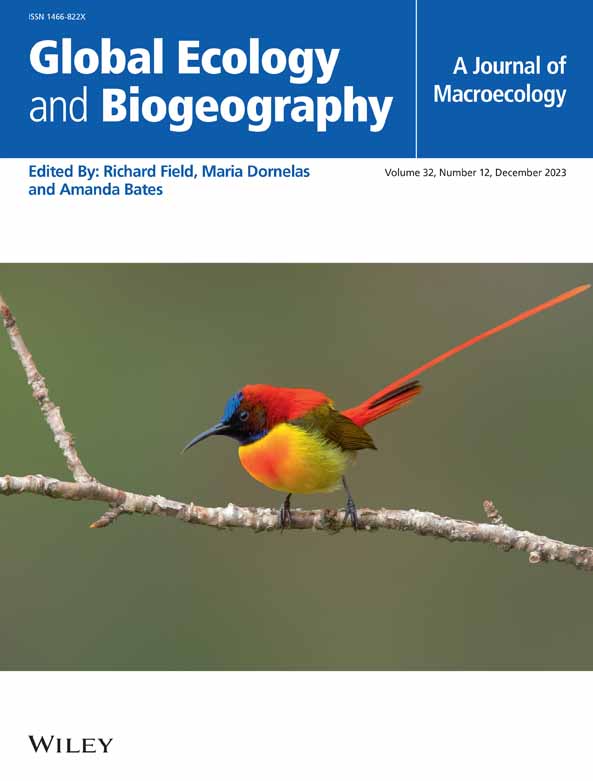Recent Abundance Changes at Species' Range Limits in the North and Central American Avifaunas
Abstract
Aim
Species are often expected to track climate change via changes in their abundances and distributions. This climate tracking hypothesis generates the prediction that warming temperatures should cause species to show population increases at their poleward range limits and population decreases at their equatorward range limits. We tested these predictions for 516 species of North and Central American birds.
Location
North and Central America.
Time Period
2012–2022.
Major Taxa Studied
Birds.
Methods
We used data on bird species' recent abundance changes within their breeding or year-round distributions from eBird Status and Trends models, and temperature data from a global temperature dataset. We defined species' northern and southern range limits, then used regression models to test whether recent abundance changes at species' range limits were predicted by temperature change and a set of ecological traits.
Results
Abundance changes at species' range edges are not associated with temperature change. There is a latitudinal gradient in recent abundance changes: lower-latitude species have increased in abundance at both northern and southern range limits, whereas higher-latitude species have declined in abundance at both range limits.
Conclusions
Patterns of abundance change at species' northern and southern range limits are not consistent with the climate tracking hypothesis for North and Central American birds. This result casts doubt on the accuracy of long-term biological forecasts that assume tight temperature tracking for these avifaunas. Our finding of a latitudinal gradient in recent abundance change suggests lower-latitude species may generally be benefiting from climate change, with consequences for local and regional communities across latitudinal gradients.


 求助内容:
求助内容: 应助结果提醒方式:
应助结果提醒方式:


